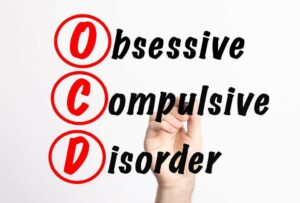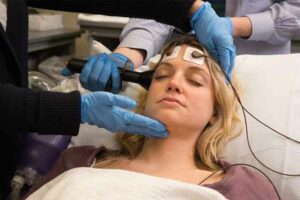Shock therapy is a treatment that has been used for many years to help people with mental health conditions like OCD. It involves giving the person a small electric shock when they have a panic attack or display any other symptoms of OCD. While it may sound barbaric, shock therapy is very effective in treating OCD. In this blog post, we will discuss what shock therapy is and how it can help people with OCD.
Contents
What Is OCD?

OCD is a type of mental illness that causes people to have recurring and intrusive thoughts, feelings, and behaviors. People with OCD often feel like they need to perform specific rituals or routines to cope with their anxiety.
The signs of OCD can include:
- Intrusive thoughts that won’t go away: When people experience intrusive thoughts, they can’t seem to control them. They may feel like these thoughts are intrusive and unwelcome in their lives.
- Obsession with rituals and routines: People with OCD often feel that if they do not follow their specific routines or rituals, something bad will happen. This often causes extreme anxiety and difficulty in day-to-day functioning.
- Compulsive behaviors: People with OCD often engage in compulsive behaviors like checking and re-checking things multiple times, counting objects repeatedly, or washing their hands excessively. These behaviors are done in an attempt to relieve the anxiety caused by the intrusive thoughts.
- Anxiety and fear surrounding certain objects or situations: Also known as “fear of the unknown”, people with OCD often fear certain objects or situations because they think something bad will happen if they come in contact with them.
What Is Shock Therapy?
Shock therapy is a form of medical treatment used to treat mental health disorders. It involves delivering low electrical currents through electrodes placed on the scalp. These electrical currents cause brief periods of altered consciousness and intense sensations. This form of treatment has been used for decades to help people with mental illnesses such as bipolar disorder, depression, OCD, and schizophrenia.
This therapy, also known as electroconvulsive therapy (ECT) or electroshock therapy, is believed to reset chemical levels in the brain and provide relief from symptoms of mental illnesses. The procedure may be done on an outpatient basis under general anesthesia. Sometimes, a muscle relaxant may be given to reduce any involuntary movements that can occur during the procedure.
Could Shock Therapy Help My OCD?

Shock therapy is rarely used for people with obsessive-compulsive disorder (OCD). However, some studies have found that it can be an effective treatment for severe cases of OCD when cognitive behavioral therapy and medications have failed to work. One study found that up to 80% of people who received shock therapy as part of their OCD treatment experienced significant improvement in symptoms.
When considering shock therapy as a treatment option, it’s important to speak with your doctor about how it works and what the risks are. It’s also important to consider all other available treatments first before deciding on this option. Shock therapy is a drastic measure and should only be used as a last resort when other treatments have failed.
Ultimately, shock therapy can be an effective treatment for people with severe OCD when all other options have been exhausted. However, it’s important to weigh the risks and potential benefits before deciding if this option is right for you.
Working on Shock Therapy for OCD
The working of this therapy for OCD is based on the fact that electrical stimulation can impact the brain by reorganizing its neurochemistry. It works to reduce symptoms of OCD through electric currents delivered over the surface of the scalp, known as Transcranial Direct Current Stimulation (tDCS). This type of therapy has been shown to reduce symptoms such as rumination, hyperactivity, and intrusive thoughts associated with OCD. The exact mechanism behind it is still not fully understood, but studies have suggested that tDCS increases levels of GABA, a neurotransmitter in the brain involved in regulating mood and stress response.
The working of shock therapy for OCD involves applying electrical stimulation to specific areas of the brain.
- This can be done either by placing electrodes on the scalp or surgically implanting them into the brain.
- During a treatment session, mild electric pulses are sent through these electrodes to create an electrical field across the targeted area.
- The stimulation is adjusted throughout a session and typically lasts between 20-30 minutes.
Also known as electroconvulsive therapy (ECT), shock therapy for OCD is considered a safe and effective treatment for severe symptoms of the disorder. There are very few side effects associated with this type of therapy, though some people may experience temporary memory loss or headaches after a session.
Ultimately, shock therapy for OCD can be an effective tool in the management of severe symptoms and can help those struggling with the disorder improve their quality of life. If you think that shock therapy could be beneficial to managing your OCD, talk to your doctor or mental health professional about the best treatment options available.
Types of Shock Therapy for OCD

The most common type of shock therapy for OCD is Electroconvulsive Therapy (ECT). This method involves passing a small electric current through the brain to produce a seizure. The seizure changes the chemical balance in the brain and can help control obsessive-compulsive symptoms. ECT is usually administered under general anesthesia, so there is no pain associated with it.
Another type of shock therapy used to treat OCD is Vagus Nerve Stimulation (VNS). In this procedure, a device is implanted beneath the skin near the neck that sends electrical impulses to the vagus nerve. The vagus nerve is connected to areas of the brain responsible for controlling anxiety and mood, which may help reduce obsessive-compulsive behaviors.
Transcranial Magnetic Stimulation (TMS) is another form of shock therapy that may be used to treat OCD. This procedure involves using a magnet to stimulate the brain and alter activity in parts of the brain responsible for regulating emotions and behaviors. The effects of TMS can last up to several weeks.
In some cases, Deep Brain Stimulation (DBS) may also be used as a form of shock therapy for OCD. This method uses wires implanted into the brain to deliver electrical signals directly to specific areas known to regulate emotion and behavior. Although this type of therapy is still experimental, it has been shown to reduce symptoms significantly in some people with severe forms of OCD who haven’t responded well to other treatments.
No matter which type of shock therapy is used to treat OCD, it is important to remember that the goal of all these treatments is not to cure the disorder, but rather to provide relief from symptoms.
Do People Prefer Shock Therapy for OCD?
The answer to this question depends on the individual situation. For some people, shock therapy may provide relief from symptoms of OCD, while for others it may not be a good option. In most cases, doctors will recommend traditional treatments such as cognitive-behavioral therapy or medication first before considering shock therapy as an option.
There are some risks associated with electroconvulsive therapy (ECT), which is the type of shock therapy used to treat OCD.
- These include memory loss and confusion after treatment, headaches, muscle spasms, and seizures, among other side effects. Additionally, ECT can be expensive and difficult to access due to limited availability or insurance coverage.
- Also, some people may have ethical or personal reservations about using shock therapy to treat a mental health disorder. Ultimately, the decision of whether or not to try shock therapy for OCD should be made in consultation with a doctor who is familiar with the individual’s medical history and condition.
In short, while some people find relief from their OCD symptoms through shock therapy, others prefer to pursue other forms of treatment. Ultimately, the best option for each individual depends on their specific condition and preferences. It is important to speak with a doctor about all available options before making a decision.
Conclusion
Shock therapy is a powerful tool that can be used with great success in treating mental illness. However, it is important to remember that shock therapy should only be used when necessary and the risks and benefits must be carefully weighed before any decision is made. It is not a one-size-fits-all solution, and the individual needs of each patient must be taken into account.
With careful consideration and supervision by qualified medical professionals, shock therapy can be an effective method of treatment for certain conditions. Ultimately, it is up to the patient and their healthcare team to decide whether or not to pursue shock therapy as an option.
For more information and guidance, please contact OCDMantra. OCD is a mental health disorder characterized by obsessions and compulsions. If you have any queries regarding OCD treatment, ERP therapy experienced therapists at OCDMantra can help: Book a trial OD therapy session.


